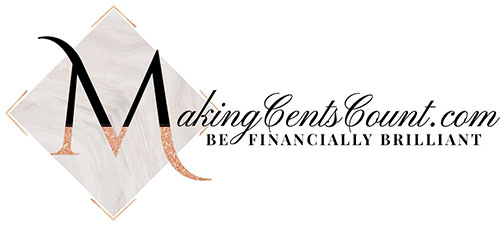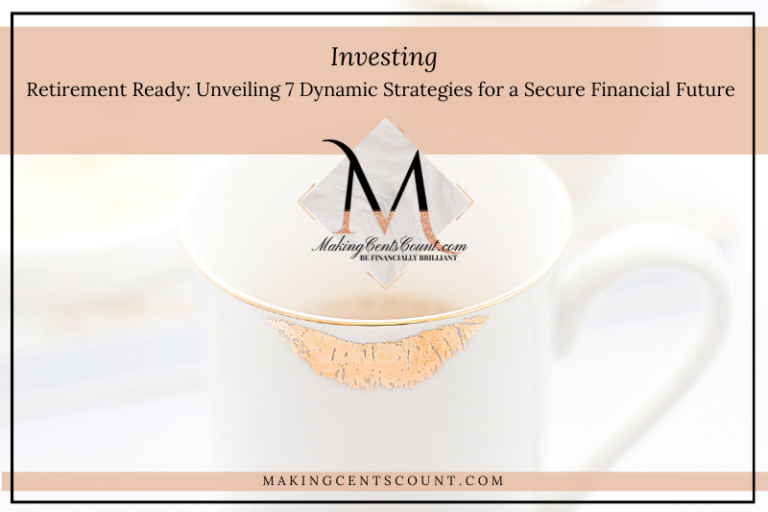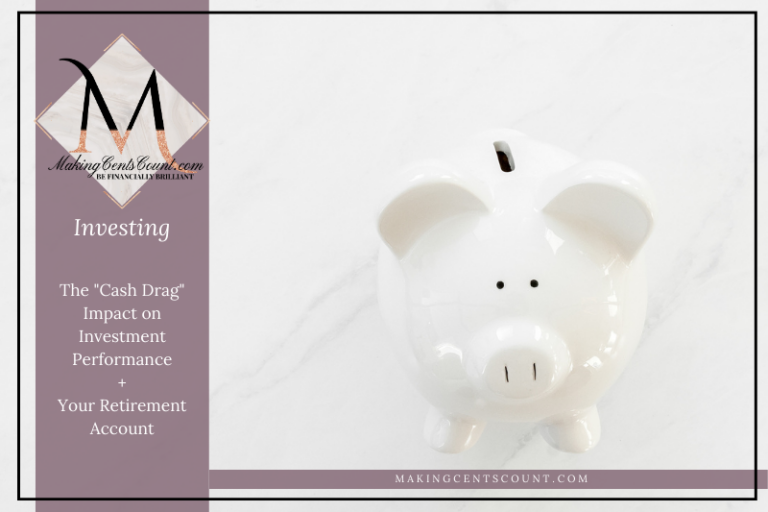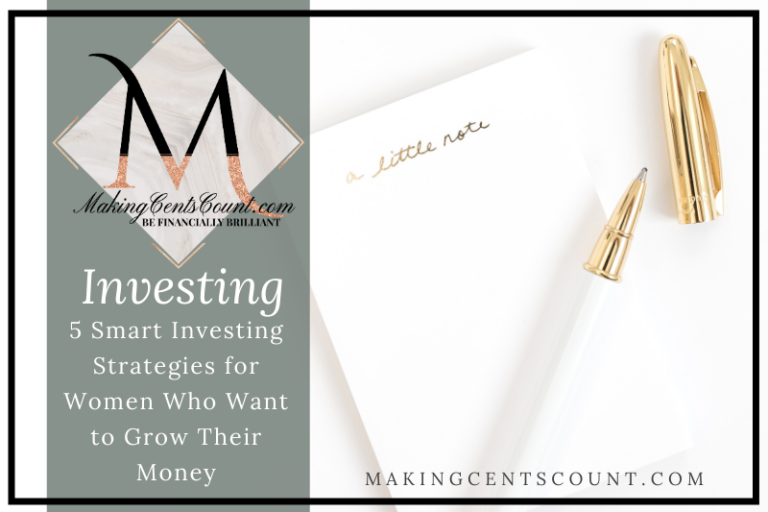Make Sense Of Mutual Funds By Learning The Right Mutual Fund Terminology
Estimated reading time: 15 minutes
If you’re trying to make sense of mutual funds, it can get confusing. As you fall down the rabbit hole of stocks, bonds, this fund, or that fund, chances are it becomes more and more challenging to understand. So today, we’re going to simplify mutual funds and break them down in a transparent way. We’ll explore some of the standard mutual fund terminologies to help you steer clear of the pitfalls and confusion.
Put on your thinking caps — here’s everything you need to know to understand and make sense of mutual funds (and to help you avoid making investment mistakes)!
Table of Contents
- Understanding the Basic Mutual Fund Terminology and Risks
- A Brief History Lesson on the Investment Act of 1940
- The Types of Investment Companies
- Understanding the Pros and Cons of Unit Investment Trusts
- Selecting a Management Company for Your Investment
- Understanding Mutual Fund Investment Types and Risks
- Money Market Fund
- Bond Fund
- U.S. Government Funds
- Municipal Bond Funds
- Corporate Bond Funds
- High-Yield Funds
- Equity Income Fund
- Index Fund
- Exchange-Traded Funds (ETFs)
- Growth and Income Fund
- Balanced Fund
- Asset Allocation Fund
- Growth Fund
- Conservative Growth
- Aggressive Growth
- Sector Fund
- Specialized Fund
- International Fund
- Emerging Market Fund
- Global Fund
- Hedge Fund
- Making Cents Count Financial Organizer
Are you ready to start investing, control your finances, and prepare for retirement? Join our amazing community! You’ll receive exclusive financial tips from Making Cents Count, as well as unlimited FREE access to our resource library full of money-saving tools and guides.
Understanding the Basic Mutual Fund Terminology and Risks
If you’re brand new to the world of mutual funds, I’m going to recommend you first explore my post Understanding Mutual Funds. There, I breakdown all details on investing with mutual funds.
If you’ve dipped a toe in the mutual fund pool and you’re considering taking the plunge, you may be wondering why someone would invest in mutual funds in the first place.
Mutual funds are:
- Convenient
- Cost-effective
- Less risky than other investments
- A great way to build confidence in investing
Speaking of dipping your toe in the “pool”—mutual funds are low risk because you are investing in a collection of assets that invests in stocks, bonds, and other securities. You aren’t on your own (as you would be if you purchased individual stocks), playing the stock market and subject to the ups and downs. (Learn more about the wild ride of the stock market here.)
To be clear, you can (and will) experience the ups and downs of the market whether you invest in mutual funds or stocks. Just know when you purchase a mutual fund your holdings are more diversified versus purchasing an individual security.
While some investors prefer a combination of both stocks and bonds in their investment portfolio, there’s more of a tendency to lean towards purchasing a “packaged product” — and yes, you guessed it, the packaged product is called a mutual fund.
The packaged product is what makes mutual funds so convenient and usually more cost-effective than purchasing individual stocks. When purchasing a mutual fund, you share in a broad portfolio that’s professionally managed.
A Brief History Lesson on the Investment Act of 1940
Now, honestly, this is where people’s eyes start to glaze over. I know, I know — mutual funds get confusing, and when we start talking history, it gets even more challenging to understand. I’ll keep this part simple.
In short, the Investment Act of 1940 was put in place by Congress to regulate the investment industry and put universal standards in place. This Act is regulated and enforced by the SEC (Securities and Exchange Commission). Following the big stock market crash of 1929, the market was all over the place. While some measures were in place before the 1940 Act, this was the big regulatory framework that detailed how investments like stocks and mutual funds should work going forward to protect the interests of consumers.
Mutual funds help stabilize investments. How does that work? Well, let’s say you buy 100 shares of Caterpillar (CAT) stock. At the close of the market, those 100 shares will either going to close up (meaning, they’re worth more than you paid for them) or close down (meaning they’re now worth a little less). You’ve either made or lost money that day — and every day after that until you sell your stock. You’re subject to the whims of the market, which can lead to a wild ride.
On the other hand, when you invest in a mutual fund, you’re buying into several individual stocks that have been “pooled” together into one mutual fund. The shareholder now owns the mutual fund, and the mutual fund holds a portfolio of securities. As an investor, your ownership consists of an undivided interest in the mutual fund, meaning that you don’t own a specific interest or any one particular asset within the mutual fund itself.
Let’s say your mutual fund contains Caterpillar (CAT), John Deere (DE), Home Depot (HD) and Lowe’s (LOW) stocks. If these stocks were all within the same mutual fund, they’d be considered a “Sector Mutual Fund” — all within a particular industry, and yet, are also competitors.
This internal competition makes mutual funds less risky than owning individual stocks. Using an extreme example (so it makes more sense), if the Caterpillar plant burns down and you’re holding onto that single stock, your investment is now gone. But if you bought into a Sector Mutual Fund and the Caterpillar plant burned down, your investment in that “portion” of the mutual fund went to zero. Still, in all likelihood, John Deere’s stock (the competitor) will most likely increase in value. Your risk will balance out.
So as you can see, mutual funds are a safer, less-risky investment.
The Types of Investment Companies
The Investment Company Act of 1940 defines three types of investment companies.
1. Face-Amount Certificate Companies
These are a debt security that holds face value. The issuer must pay the holder of the security (investor) the face value at maturity. These are usually in amounts of $1,000 (but can also be higher or lower depending on the issue).
2. Management Companies
- Open-End Mutual Funds, also known as Traditional Mutual Funds
- Closed-End Funds (CEFs), also known as Closed-End Mutual Funds
- Exchange-Traded Funds (ETFs) — this one is a variation within a management company
We’ll explore these mutual fund options in-depth below.
3. Unit Investment Trusts (UITs)
Think of these as a cross between a bond, a trust, and a mutual fund. A UIT is a relatively fixed portfolio of securities; for example, five, ten, or twenty specific stocks or bonds offered to investors. There’s no active trading of stocks or bonds within a UIT. These are typically sold to investors for a predetermined timeframe and typically has a closed investment period.
For the sake of simplicity, we’ll focus on the Management Company and UIT side of investments, as Face-Amount Certificate Companies are pretty rare.
Understanding the Pros and Cons of Unit Investment Trusts
First, some background on UITs. Unit Investment Trusts issue redeemable securities. They’re a lot like Mutual Funds but have slight variations. They’re more hands-off than a mutual fund. Unlike a mutual fund, the UIT has a maturity date. There are sales fees associated with the UIT, just like a mutual fund, so you will pay to purchase, but not to sell.
So if you’re thinking of investing, what are the pros and cons of choosing a UIT bond mutual fund over a traditional fund?
Pros:
- Diversification: There are multiple varied bonds and related investments. Purchasing a collection is safer than a single investment (similar to mutual funds versus individual stocks).
- Consistency. The diversification within a UIT doesn’t change. You know what bonds are there and there’s no trading, buying, or selling. You don’t have to wonder what’s changed in your quarterly statement.
Cons:
- Risk. Since there are multiple bonds, you still need to examine your risk tolerance. As with any investment, it’s essential to research what’s right for you. This research can be time-consuming, especially with complex investments (you may want to look into U.S. Treasuries since they’re more straightforward).
Selecting a Management Company for Your Investment
Let’s move on to exploring Management Companies. A Management Company is the most common investment option. These are available as an open-end or closed-end fund.
- An open-end mutual fund is where you can purchase and redeem (sell) shares whenever you want. There are continuous primary offerings.
- A closed-end mutual fund doesn’t continuously issue new shares, but instead, issues a fixed number of shares usually through a one-time public offering. A closed-end fund generally does not redeem shares.
A Management Company can also be diversified or non-diversified. To be considered diversified:
- At least 75% of the assets must be invested,
- No more than 5% (of that 75%) is invested in one particular company,
- The investment company may not own more than 10% of the voting stock in any one particular company.
Depending on your risk tolerance, you can invest anywhere between very conservative and “swinging from the vine” as I like to say. With so many options, you’ll still be able to find a mutual fund that’s right for you. The decision is all yours!
So how do you know the order of risk? To understand the most conservative mutual funds to the most aggressive mutual funds, envision a pyramid.
At the foundation, go the most conservative funds. Lay down an Income Fund (Bond Mutual Funds), and next to it — side-by-side — is our Tax-Free Income (Municipal Bond Mutual Funds).
On the second floor of the pyramid, you’ll find Growth and Income Mutual Funds. On the third floor, Growth Mutual Funds, and finally, at the very top (with the most risk), Emerging Markets.
Are you still wondering what the mutual fund terminology means, exactly? I’ve broken down the details below to help you make sense of mutual fund terminology and risk. I’ve included the Portfolio and the type of investor they’re most suitable for. This breakdown will help you assess your risk tolerance and choose the best investment for your needs.
Understanding Mutual Fund Investment Types and Risks
Money Market Fund
Money market funds invest in short-term debt securities, usually with a maturity of less than one year. The benefits of these types of accounts are that you can withdraw funds at any time by merely writing a check since these accounts offer check-writing privileges.
The returns on money market funds will vary and the dividends are usually declared daily and paid to you monthly. This type of fund is suitable for a short-term investor who prefers liquidity along with safety.
You’d find this Portfolio type in Cash Equivalents, and that includes the following:
- T-bills
- Commercial Paper
- Negotiable CDs
- Bankers acceptances
Bond Fund
Bond funds invest strictly in bonds (pretty obvious, right?). This type of fund is suited for investors primarily interested in current income.
Note that bond funds have some associated risk, including:
- Credit Risk
- Call Risk
- Reinvestment Risk
- Interest-Rate risk (to some degree)
You’d find this Portfolio type in Debt Securities (Fixed-Income).
Bond Funds and are considered subcategories on the following type of bonds purchased.
U.S. Government Funds
- This Portfolio consists of Treasury Securities
- Suitable when you want income and safety
Municipal Bond Funds
- This Portfolio includes of Municipal Securities
- Suitable when you want tax-exempt income
Corporate Bond Funds
- This Portfolio consists of Investment-Grade Corporate Bonds
- Suitable when you need income
High-Yield Funds
- This Portfolio consists of Noninvestment-Grade Corporate Bonds (Junk Bonds)
- Suitable when you want high income and are willing to accept a high degree of capital risk
If you’re deciding to purchase an actual bond(s), versus buying into a bond mutual fund, realize the bond will have a maturity date, whereas the bond mutual fund will not.
Equity Income Fund
Equity Income Funds invest in companies that pay high dividends in relation to their market price. These funds have less potential for capital appreciation in the long run, as they tend to be mature companies, but they’re also less likely to decline in value. This fund is suitable when you want income in addition to the potential (small) capital appreciation in the future.
You’d find this Portfolio type in Common and Preferred Stocks.
Index Fund
Index funds invest the Portfolio, mirroring the composition, like a stock or bond index (such as the S&P 500). They’ve definitely become more widely known over the past few decades. The goal of Index Funds is to emulate the same returns as the Index. This type of fund is suitable when you want a passive investment strategy with lower fees.
You’d find this Portfolio type in Securities selected to mirror a particular Index.
Exchange-Traded Funds (ETFs)
ETFs usually represent an index such as the S&P 500, Nasdaq 100, Dow Jones Industrial Average, or an index representing securities in a specific industry or country. Unlike the Index Fund above, the prices on ETFs are determined by supply and demand and you pay a commission when it’s purchased or sold. This type of fund is suited for investors who make frequent trades based on economic trends.
You’d find this Portfolio type in Alternative Investments.
Growth and Income Fund
Growth and Income Funds invest in companies expected to show more growth than the typical Equity Income stock as well as higher dividends. The primary objectives are capital appreciation and current income. This type of fund is suited for investors who want both capital appreciation and income.
You’d find this Portfolio type in Stocks.
Balanced Fund
Balanced Funds invest in bonds, preferred stock, and common stock. These funds tend to be less volatile because of the fund’s balanced mix. This fund is suitable when you want to invest in all three asset classes.
You’d find this Portfolio type in a mix of various Stocks, Bonds, and Cash Equivalents.
Asset Allocation Fund
Asset Allocation Funds invest in Common Stocks, Bonds, and Money Market Instruments. The allocation is based on the current market conditions. Computer models are used to determine the proper proportion of the fund’s assets to hold in each asset class. This type of fund is suitable when you want diversification in the asset classes while in a single fund.
You’d find this Portfolio type in Stocks, Bonds, and Cash Equivalents. It’s important to note the allocations will likely change and the percentage in any asset class could drop down to zero.
Growth Fund
Growth funds invest in stocks where the primary objective is long-term growth. There are both Conservative Growth and Aggressive Growth options.
Conservative Growth
This Portfolio consists of Blue-Chip, Large-Cap Stocks. This investment is suitable for investors who want long-term capital preservation.
Aggressive Growth
This Portfolio consists of Small-Cap and Mid-Cap Stocks. Aggressive Growth funds are suitable for long-term investors who can handle the market’s worst downturns while seeking the strongest returns.
Growth funds are more diverse and more vulnerable to market risk. They offer higher growth potential, but remember that with more growth comes more risk.
You’d find this Portfolio type in Common Stocks.
Sector Fund
Sector funds invest primarily in a particular industry or geographical area. In my example above, I mentioned Caterpillar (CAT), John Deere (DE), Home Depot (HD) and Lowe’s (LOW) stocks in a Sector Fund. These companies are within the same industry even though they are competitors. Sector Funds are suitable when you are willing to assume more risk in exchange for a higher potential return.
You’d find this Portfolio in Securities of one industry or geographic area.
Specialized Fund
Specialized funds invest in companies that have (or are) going through a change, such as bankruptcy. Precious metals funds invest in companies tied to gold, silver, other precious metals, as well as the metals themselves. These funds tend to be riskier than other diversified funds. Specialized funds are suitable when you are willing to assume more risk in exchange for a higher potential return.
You’d find this Portfolio type in Securities of one industry or geographic area.
International Fund
International funds invest primarily in securities of countries located outside the country in which you, the investor, reside. These funds may include investing in a single country as well as regional funds that are specific to a geographical area. This type of fund is suitable when you want to assume the additional risk outside of the U.S. markets.
You’d find this Portfolio type in Non-U.S. Securities.
Emerging Market Fund
Within the International Funds, you’ll find Emerging Market Funds. For these definitions, I’m separating them. Emerging Market Funds invest in the stocks and bonds of emerging market countries and tend to be extremely volatile. These countries have an agriculturally underdeveloped economy and are transitioning to a modern one. This type of fund usually tends to be suitable for aggressive investors only.
You’d find this Portfolio type in the Securities of emerging markets countries.
Global Fund
Global Funds invest in countries throughout the world, including the United States and abroad. The primary objective is capital appreciation. This type of fund is suitable for investors who want to diversify against country-specific risk.
You’d find this Portfolio type in Common Stock.
Hedge Fund
Hedge funds use all sorts of leverage, which means it purchases on margin, options (or, as I like to say, legalized gambling), short sales, and speculative investment strategies. It’s considered an alternative investment and is only available to institutions and individuals with significant assets. This type of fund usually has a minimum investment from $500,000 to $1 million.
You’d find this Portfolio type in Alternative Investments.
Now that you’ve got a better idea of the types of mutual funds available and the risk associated with each type, you should feel comfortable exploring the market. The best way to get over a fear of investing is to start a little at a time, informing yourself as much as possible. As they say, “the more you know,” the more confidence you’ll build about your investment options.
Making sense of mutual funds needn’t be intimidating or scary. It’s all about understanding the market and only taking on as much risk as you’re comfortable with!
If working on your finances is one of your goals right now (or, maybe it’s been a goal for some time), I suggest starting with the Making Cents Count Financial Organizer.
Our financial organizer is the robust answer you need. The organizer is our DIY financial services option, providing you with the tools to eliminate financial overwhelm.
In the exclusive Making Cents Count Financial Organizer, you’ll get:
- Clear strategies to get your finances under control
- Processes to organize and streamline your investments
- Guidance to track your legal documents, tax information, and permanent records
- Markers to know when you should meet with an attorney to establish a will or trust
- Templates, checklists, and step-by-step actions
- Insights on the financial-must haves to build a secure future
- Detailed How-To Guide for optimal results
If you want financial confidence, grab the Financial Organizer, and get results that fit *your* lifestyle!
Making Cents Count Financial Organizer
Once you get your budget rolling, check out my post on 6 Simple Steps to Get Financially Organized. This post also includes a helpful checklist available in my Resource Library (free to access).
Admittedly, this particular checklist has a larger-scale focus on your overall financial picture, but I genuinely feel that getting your finances organized is essential.
I’m so excited to invite you to join our Financial Success Society Waitlist! Our enrollment opens soon (so don’t miss a chance to get on the notification list). Your journey to financial success is unique and with this exclusive membership, you’ll receive the guidance you desire, enabling you to move financially forward, no matter where you are in your financial journey. At Making Cents Count, we offer an array of outstanding products and services to help you get control of your finances so they won’t control you!






